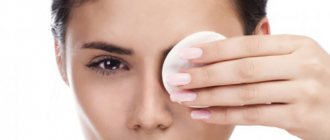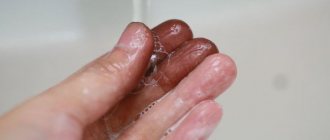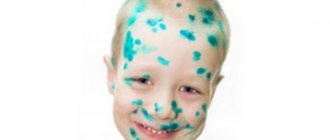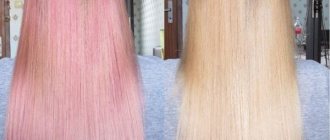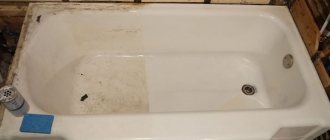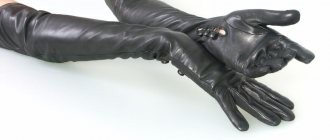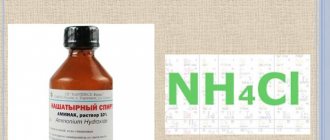Henna is a natural dye that has found wide application in everyday life: it is used to dye hair and apply unusual designs on the palms. Therefore, the question becomes relevant: how and with what to wash off henna from the skin if it accidentally gets in while working with curls or if the patterns made have already faded and are no longer attractive. There are several simple ways.
Available means
Dyeing your hair with henna helps strengthen the roots and make the curls thicker, but this natural dye can leave unpleasant reddish spots on the skin of your hands, forehead, and ears. There are several simple ways to get rid of them.
- Vinegar solution is a simple remedy to use at home. To prepare it, take a glass of vinegar and water, mix and wipe the stained areas with the resulting solution using a cotton pad. After the procedure, the skin is washed with warm water.
Advice
For delicate facial skin it is better to use 3% vinegar; 9% is suitable for hands. Vinegar cannot be used in its pure form: it will enhance the effect of henna.
- Alcohol or vodka. These are ready-made liquids for quickly cleansing the skin of henna: apply a small amount of alcohol (or vodka) to a cotton pad and wipe the stained areas. Next, you need to rinse them with water.
Any of these products can be found at home or purchased in a store.
Tips and precautions
To remove natural dye in the form of henna from the face, it is not always possible to use popular methods that have repeatedly proven their effectiveness. To wash off henna that has got on the skin of the eyebrows and other areas of the face, you should follow the following rules at home:
- You need to be extremely careful when choosing a product to remove henna from the scalp, because the substance can get into your eyes. You can cleanse your face of biotattoo with lotions and oil compositions. If you frequently dye your hair, it is advisable to use a special cosmetic product that removes waterproof makeup. It will have a less pronounced effect, but the advantage will be that it is safe for your skin.
- To avoid getting henna on exposed skin when dyeing your hair, you should apply a rich cream to these areas (temples, ears, forehead). After painting, wipe off the areas of skin treated with greasy cream with a cotton pad. It is better to use the most fatty, thick cream. It will better protect the skin from the penetration of natural dye. This means you will spend less time and effort on cleansing your skin.
- When the method you tried does not bring the expected result, do not give up. Try another method for removing paint residue at home. Only in this case it is recommended to wait 24 hours between procedures. This pause is necessary to prevent injury to the epidermis.
- After you have removed henna using any of the methods described above, your skin should be treated with a moisturizer. This procedure helps restore the regenerative abilities of the dermis.
- It is likely that removing henna or mehendi stains will not be possible in one procedure. Don't be upset. Use the product once or twice and the positive effect will not be long in coming.
- Henna is quite easy to wash off if done immediately after the pigment gets on the skin. Even after washing with plain water, not a trace will remain. It is more difficult to remove old stains, because the pigment is already strongly ingrained.
In order not to waste energy, nerves, and time on cleansing henna, it is better to prevent accidental pigmentation. This is of course possible when dyeing your hair. But, if you have done mehendi, get ready for a long time. It’s better to get a tattoo done by trusted artists and carefully select the design so that you don’t have to look for a suitable way to remove mehendi from the skin.
How long does a henna design last on the skin?
Henna is often used for tattooing and hair coloring. This product attracts women because it can be gradually washed off and does not harm the skin and hair. In addition, you can erase stains or a tattoo using one of the methods described above.
Share Like Share Tweet Pin
Cosmetic methods
There are several other options to remove reddish spots from your skin.
- Lotions containing alcohol allow you to quickly get rid of traces of henna.
- Using nail polish remover is another effective way to remove stains. However, it is not recommended for use on the face.
- The scrub makes it possible not to completely cleanse the skin, but to make the red color a little lighter. It can be used in cases where the skin is very sensitive and prone to irritation from interaction with alcohol-containing substances. It is necessary to take a small amount of scrub and treat the painted areas.
- Sea salt. Acts on the principle of a scrub, removing paint along with skin cells. This method is not suitable for those who have inflammation or acne on their face.
Advice
Any of the listed products has a negative effect on the condition of the skin, so after treatment you should thoroughly rinse the painted area with water and then apply a greasy cream to it. For the face, it is best to make a nourishing mask.
What not to use to remove henna from skin
To remove traces of a blurred tattoo or other stains, do not use aggressive components. The use of these substances will help remove pigment, but can cause burns, inflammation and skin pathologies.
Prohibited components:
- acetone;
- kerosene;
- petrol;
- bleaches;
- washing powder;
- cleaning products for glass and other surfaces.
If henna stains appear on the nail plates, then nail polish remover should be used with caution.
Aggressive components must not be used on the face, since any careless movement can lead to the substance getting into the eyes, which can lead to serious complications.
The most effective means
To get rid of traces of henna staining at home, you can use the most powerful means, but it is important to remember that this is an emergency measure, since these substances are very harmful.
- Hydrogen peroxide. It is applied to a cotton pad, then used to wipe the stained skin. It is important to use a 3% solution, because a higher concentration can cause burns.
- Ammonia (10% solution). The procedure is the same.
- The following solution is even more effective: 1 tbsp. l. ammonia mixed with 5 tbsp. l. water and 5 tbsp. l. hydrogen peroxide, apply to the skin for 10 minutes, then rinse thoroughly with water.
We recommend: How to effectively bleach gray, washed laundry?
These methods allow you to quickly remove henna from the skin, but they should be used infrequently.
How to rinse off correctly?
Experienced housewives have several means to remove henna marks from the body. They may act differently on different skin types. It may take several applications to remove the paint completely.
If one of the remedies does not work, wait at least a day before using the next one, otherwise you can cause severe damage to the epidermis. You should not use both chemical and physical removal methods at the same time, this will have too strong an irritating effect.
You can remove henna from your skin:
- Laundry soap
You can remove stains from lawsonia powder from the skin using ordinary laundry soap. This product is famous for its cleansing properties. Many women use it for washing, cleaning and even hair care. To clean henna, you need to moisten a brown bar in water and rub it quite intensively on the areas of the dermis with dye residues. You need to leave the composition on the surface of the skin for ten to fifteen minutes, and then rinse with enough warm water.
You can scrub off the stained areas using a pumice stone. Hot water and mechanical stress have a detrimental effect on henna. This is what ladies use. It is necessary to steam the area of the skin and gently rub it with a pumice stone. Thanks to this, the surface layer of the epidermis is removed along with pigment particles. This speeds up the regeneration process and allows you to get rid of paint faster. The skin after this procedure becomes smooth and silky. The main thing is not to rub too hard, and after the procedure, use moisturizing and protective products to protect the delicate renewed skin.
- Vegetable oil
They can also try removing henna-based paint with vegetable oil. To do this, it is heated in a water bath until warm, but it should not burn. It is applied to the surface of the epidermis. After waiting for about half an hour, the oil is removed with warm, clean water.
Abrasives are great for cleaning the dermis. In their action they are similar to pumice; the colored pigment is simply erased along with the keratinized layer of the epidermis. You can use cosmetic scrubs, or you can prepare them yourself.
You can, for example, make a scrub with coffee at home. To do this, ground coffee is mixed with a small amount of your usual shower gel or liquid soap. Coffee is also suitable after brewing. The resulting mass is intensively rubbed into the skin in places where the paint has come into contact. Then you can leave it for a few minutes and rinse with water. You can repeat this effect every four hours until the marks completely disappear.
Sea salt allows you to remove even stubborn and old dye stains. If you only have coarse salt at home, you need to grind it a little in a coffee grinder. It should be applied with light circular movements, lightly moistening with water. Then rinse off, as in the previous options.
- Cigarette ash
Cigarette ashes can help get rid of this problem. Any ash will do, you just need to crush it slightly. This is quite easy to do due to the fragility of the substance. A cotton pad moistened with water should be dipped in ashes and rubbed on problem areas until the desired result is achieved.
- Alcohol lotion
Any alcohol-based lotion will help remove a boring mehendi tattoo. If you don’t have such a product at home, you can use plain vodka. You can dilute alcohol with water to about thirty degrees concentration, otherwise you will get a chemical burn. To carry out the procedure, you will need several cotton pads or simple pieces of cotton wool. One of the pieces is moistened with lotion and the colored skin is carefully treated. There is no need to press too hard. Then take the next piece of cotton wool and repeat the steps.
Lemon juice itself is useless for removing henna. However, when combined with baking soda, it can help rinse it off your body. To prepare the mixture, 30 ml of lemon juice must be combined with 20 g of soda, this is about a tablespoon. The composition will begin to foam, this is a normal chemical reaction between an alkali and an acid. This product is absolutely safe and is washed off with running warm water.
- Hydrogen peroxide
Hydrogen peroxide is a good bleaching agent. To remove henna stains, you need to apply it to a piece of cotton wool and treat the contaminated area. You can also drop it directly onto your skin and then rub it. Do this until completely clean.
Using Lemon Juice
A more gentle option is to treat the skin with a mixture of lemon juice and soda. To prepare it you will need:
- spoon of lemon juice;
- spoon of soda;
- water.
The components are mixed to a pasty state, applied to the desired area using a cotton pad or an old toothbrush, then rubbed into the skin. After this, the mixture must be removed with water. If there is no result, the procedure should be repeated, but not earlier than in a day.
Advice
Lemon juice in its pure form does a good job of whitening the skin, but in the case of a natural dye it has the opposite effect, enhancing the color. Therefore, it should not be used in its pure form.
Citrus fruits may cause irritation or an allergic reaction, so test on a small area of skin before use.
Features of washing off henna from the skin of the face, eyebrows, arms and shoulders
The process of removing red pigment has its own characteristics.
This dye is capable of entering into a chemical reaction with other substances, so as a result of trying to remove a stain with an inappropriate product, it may not only not lighten, but also become brighter.
Any oil can be used for cleaning, only sea buckthorn oil is not suitable
The final result of the procedure depends on strict adherence to the recommendations:
- Vinegar and lemon juice should not be used in their pure form for cleansing, as they are used to fix the design. These substances can only be used in combination with other ingredients.
- Before applying the cleansing product, you should steam the problem area, which will improve access to the pigment.
- You shouldn’t expect that after the first time the tone will completely even out. Over time, the paint eats deeply, so you should be patient and act.
- Alcohol-containing lotions for removing mehendi significantly dry out the skin. After the procedure, the residues should be thoroughly washed off under running warm water and the skin should be treated with a rich cream.
- If the substance used does not bring a positive result, you need to try another only after a day, so that the epidermis has time to recover.
- To remove mehendi from the face, you need to select gentle solutions, as there is a risk of drops getting into your eyes.
Advice! After cleansing, apply a moisturizer to the skin to restore its ability to regenerate.
Removing mehendi
Henna tattoos, so-called mehendi, are now very popular. They are applied to the palms, feet, even to the back and lower back. But what if you don’t like the drawing, are tired of it, or have partially washed away and now look ugly? There are several ways to remove henna.
- If the image has just been applied and the dye has not yet been absorbed, you should wash the area with warm running water, always using laundry soap.
- However, if time is lost and the henna has already dried, this method will not help; more radical solutions will be required. First of all, you should wipe the stained area with a cotton pad generously soaked in vodka, alcohol solution or medical alcohol.
After this treatment, the painted area is washed with soap and water and lubricated with a rich cream.
If mehendi has been on the body for several days and suddenly there is a need to remove the pattern, you can use the following methods.
- Warm bath. After sitting in the bath for a while to allow the skin to steam, the area with the tattoo should be thoroughly treated with a washcloth or belongings and rubbed vigorously. The procedure will make the pattern less noticeable; the henna will completely disappear after several times. You can clean the painted area using pumice, but this method cannot be called gentle - the upper layer of the epidermis will suffer. However, the dye will wash off quite well.
- Salt bath. If the design is applied to brushes, it can be washed using salt baths. To do this, dissolve 2 tbsp in a small bowl of water. l. sea salt, place the brushes and wait until the water cools down. The pattern will become less noticeable.
- Salt mask. You can also remove henna from the skin using salt masks. This is done if the baths are uncomfortable - for example, when the pattern is located on the back. Making them is simple: moisten an old towel with saline solution (2 tbsp per liter), place it on the area with the pattern, wrap it with cling film and wait for at least half an hour, then rinse with water.
- A small mark or trace of henna can be washed off with antibacterial soap applied to a toothbrush. It is necessary to rub the stained area intensively and then rinse with water.
We recommend: Advantages and disadvantages of homemade odor absorbers for residential premises
Some of the methods that allow you to remove traces of henna will be effective after several procedures.
Peculiarities
In addition to dyeing hair with henna, the ancient art of applying patterns to the skin is increasingly becoming fashionable. This is a temporary tattoo that remains on the body for about two weeks. It has been used by women to decorate their bodies since ancient times, and a few years ago modern ladies appreciated the beauty and mystery of subtle and weightless patterns.
When decorating the body with such designs, there is a risk of an unsuccessful tattoo - or that it will get boring. After some time, areas of the skin that are often in contact with water, soap, a washcloth, or subject to friction with clothing or the body, lose color. At the same time, the drawing becomes uneven and does not look so attractive. For this reason, there is a need to quickly remove it from the skin.
Henna-based dye is not particularly durable. It lasts a little longer on the hair, and is washed off from the skin after two weeks. Even in the case of dyeing using the mehendi technique, when a particularly dark color of the composition is used, it is kept on the skin to fix it and requires careful handling. The process of pattern convergence is accelerated by regular washing with soap and warm water, especially using a washcloth. We can say that henna leaves the body along with the changing layers of the epidermis.
Unlike modern chemical dyes, lawsonia powder has unique features that must be taken into account when removing from the dermis. Let's consider those products that you should not use, and some subtleties of cleansing:
- In other cases of discoloration of the epidermis, lemon juice and acetic acid are excellent bleaching agents. In the situation with henna, its coloring properties are stimulated by an acidic environment, and the above acids have a fixing effect on the design. Their use is possible for removal as part of complex compositions.
- You need to be especially careful when choosing a product to remove stains from the composition on your head (due to the possibility of its drops getting into your eyes).
- Almost all folk remedies for removing henna are quite aggressive for the dermis. Therefore, you should not combine them for a short period of time. If one remedy does not help, you can try the next one every other day.
- It is possible that to achieve a good result you will have to use the product more than once.
- After each rinse, you need to carefully care for the skin in places where there were stains, otherwise you can seriously damage and destroy it.
Additional methods
Henna is not easy to wash off, so you need to be prepared for the fact that you will have to use various methods.
- You can use vegetable oil heated in a steam bath. Using a swab, apply the oil to the painted area, then wrap it with cling film (if there are traces of henna on your palms, you can wear rubber gloves) and leave for 30 minutes. After this, the skin is washed with water and soap.
- Olive oil is mixed with cognac (for a small area, you can take 2 tablespoons of both), the mixture is applied to the skin, left to act for an hour, and washed.
Advice
Experts recommend using laundry soap in the last two cases; it allows you to quickly remove paint residues.
- Tooth powder helps remove even the most stubborn dye without damaging the skin of your hands. It is applied using an old toothbrush, rubbed vigorously, then removed. Palms must be wet before processing.
These methods will help remove henna from the skin, but you should not expect a quick effect; the procedures will have to be repeated several times.
How to remove henna from nails
Henna powder is obtained from the dried and crushed leaves of the lawsonia bush. This is an absolutely natural product that gives your hair a fiery red color and is famous for its beneficial properties. When dyeing your hair with henna, you can easily get your hands dirty. It is possible that the composition will get on the neck, forehead or ears. Naturally, after that no one wants to appear in front of the public with red spots on their skin. Of course, this is not very durable, because this natural dye will be washed off from the skin after some time, but waiting is quite a difficult task for women who care about their appearance.
Stain protection
It is very difficult to wipe off reddish stains, and the most effective methods are harmful to delicate skin. This is why precautions should be taken when working with natural dye.
- When dyeing hair, wear gloves only, they will protect your hands.
- Before the procedure, apply a thick layer of fatty cream, wax and Vaseline along the hair growth contour, carefully smear the ears and neck. These products are easier to wash off than henna stains.
- When applying a henna design to the body, you should have a wet rag or cotton pad on hand - if the line does not turn out as intended, you should remove it until the dye is absorbed.
These simple tips will help you avoid the problem and prevent unwanted areas of your body from staining.
Henna drawing
This tattoo technique is called mehendi. The designs are made with special hypoallergenic henna; they can be a classic red color or have a wide color palette. Images are applied to any part of the body at the request of the client. Such tattoos are especially in demand in the summer. Their advantages are that they are done painlessly and for a short period of time. There is always the opportunity to delete the drawing completely or make another one.
The holding time of mehendi on the skin is approximately 2 weeks, but depending on the area of application, these periods may vary. Images are erased faster if they are located on the folds, on the wrists, where they often come into contact with water. Also, their rapid erasure occurs from intensive rubbing with a washcloth.
The problem is that the pattern wears off gradually and unevenly; after 10 days of application, unclear and unaesthetic outlines remain on the skin. I would like to remove them.
How to do it?
What not to do
Wanting to get rid of reddish spots as quickly as possible, some begin to use all available means. However, it is important to know that the following substances cannot be used to remove henna from the skin:
- petrol;
- washing powder;
- acetone;
- solvent;
- wiper.
They are toxic and will have a very negative impact on the condition of the epidermis, so they should not be used.
Removing henna from the skin is quite problematic, but home methods allow you to do this, albeit with some effort. The main thing is not to use all the means at once.
How to prevent getting hit?
Everyone knows that it is better not to fight the consequences, but simply to prevent their occurrence. This rule also applies when dyeing hair with henna.
Firstly, you must wear gloves on your hands . This applies to all hair dyes, and just for homework. Women who care about the beauty of their hands have long been accustomed to using this useful accessory to protect the skin from various irritants. Almost every pack of paint (including those based on lawsonia powder) contains a pair of gloves specifically for this purpose.
Secondly, you need to apply some kind of rich cream on your forehead, face, ears, along the entire hairline. You should not use quickly absorbing products, because the paint will be absorbed along with them. You need to apply the cream in a thick layer, sparingly. The thicker the cream is applied, the less likely it is to stain the skin. And you can wash it off while washing your hair.
In addition, beeswax can be used to protect the skin . It forms a protective layer on the epidermis that will not allow pigments to penetrate. The wax needs to be slightly heated in a water bath until it becomes soft. This makes it easier to apply. It should be distributed along the entire hairline. Don't forget about the ears, they most often end up with paint stains.
The rest of the body needs to be covered with old clothes that you don’t mind getting dirty.
